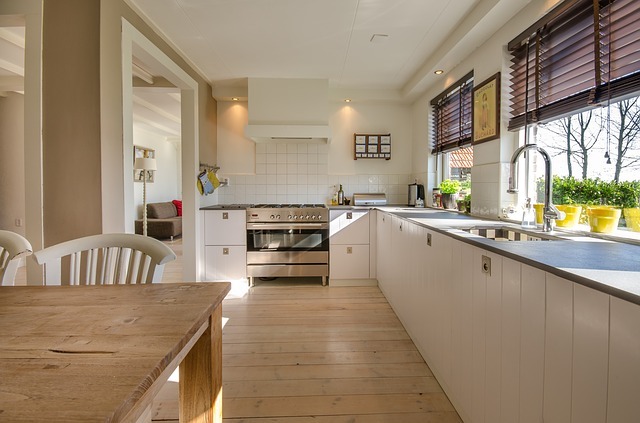Since floors are integral to the structural integrity of the house, it is critical that they are well maintained and promptly repaired when you first discover any damage.
To rebuild your floors, keep these key steps in mind. They may help you avoid unforeseen, extra work. The steps to rebuilding your floors are included in the three phases for clarity: Floor Inspection (such as at property inspection oran park), Floor Removal, Installing the new floor.
Getting Started
Cover All Legal Regulations
Before you even open your toolbox, check with the local building inspector’s office. Obtain any necessary permits that particular area requires. Be sure to properly post your permits in accordance with local ordinances.
Rebuilding or replacing floors is considered as a change to the present building as it stands. Usually these changes require permits. These regulations vary from state to state and even from county to county. Make sure you cover the legalities first. Be prepared to pay any permit fees where applicable.
You may or not need to be bonded and insured depending upon the area of the country, and whether or not you are the owner of the property who plans to live there. Again, if you are unsure, inquire.
Phase 1: Floor Inspection
Step 1: Every floor rebuild should start with an extensive inspection of the damage to determine all that is necessary to fully restore the floor. Whether it is for a project like Remove Tiles Absolute Gold Coast or a more conventional replacement, careful inspection is a must. Presuming the structure has a crawlspace foundation instead of a cement slab foundation, use a strong flashlight and go into the crawlspace of the structure.
Look for dampness or water on the ground first. Those are the sure repair areas of the floor above. Check for discolored or stained wood and fully inspect every area you find
Step 2: Pull back the insulation at these trouble spots and check the subflooring. Carefully inspect them and test these areas with a probing tool like a screwdriver or ice pick to test their strength. If it gives when you probe it, force the probing tool all the way through to the top inside flooring if you can.
This helps you to see the areas of damage when you are back inside standing on the floor. You can also quickly see the extent of the damage. Generally, if the damage is extensive, the best solution is to replace the entire floor. Repairing only a small section of a wood subfloor can create squeaks.
Step 3: While you are in the crawlspace, be sure to inspect the flooring plate along the perimeter of the floor. Check every floor joist also. Look for signs of mildew and rot all along the length of the joist.
A weakened and compromised floor joist equals a weak and potentially dangerous floor.
Take special note of any wiring which may be routed under the subfloor. You are there to rebuild the floor, not to re-wire the house.
Step 4: Mark or tag each damaged joist. After you tag them, go back and count them. If more than half are damaged or rotted, plan to replace all of them.
The logic is that they were all installed at the same time. If that many joists are damaged or weak, chances are the remaining ones will not last much longer either due to the weakened system.
With your floor thoroughly inspected, you can now accurately see the job before you, and you are better able to calculate cost, materials and time to complete the repair.
Phase 2:
Removing the Old Floor
Step 5: In accordance with local regulations, begin removing the damaged floor. Use a small pry bar to carefully pull up the old floor quarter trim and baseboard first. Hold the pry bar in place and gently tap it down behind the wood and the wall.
Repeat this method all along the wall until it is completely freed with cracks, breakage or damage. If it is still in good shape, be careful with it and preserve it to refinish and re-install if it matches and enhances the new floor.
With the old trim and baseboard removed, you can now get serious about making a quick job of removing floor layers including the top floor and subfloor. Start at the joints where you can get a good angle to pry from. Use a large framing hammer and a larger pry bar to quickly loosen the panels from the joists.
If the entire floor needs rebuilding, use a reciprocating saw (saws-all) to more quickly and efficiently remove the old flooring. You can remove the floor in large sections including the joists with this tool, but do not remove sections so large you have to saw them again to dispose of them properly.
Speaking of proper disposal, usually, the city or county requires you to have on site a disposal container of some kind. Make sure you also follow their particular disposal standards, or you will face fines.
Phase 3: Installing the New Floor
Laying Down a Solid Subfloor
Step 6: The de-construction is now completed. It is now time to install the new floor.
Re-construction is a fairly simple and straightforward process. You simply reverse what you just did to remove the old floor.
Measure, mark and set your floor joists on the new flooring plate. Screw or nail them in place. With the new floor joists now set, lay down and glue, screw or nail in the


Speak Your Mind